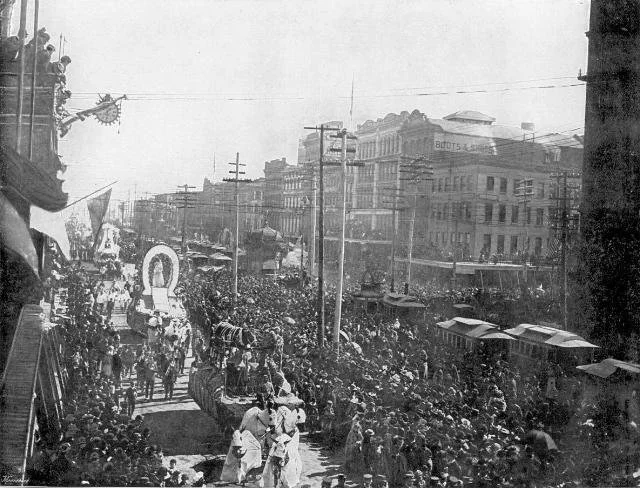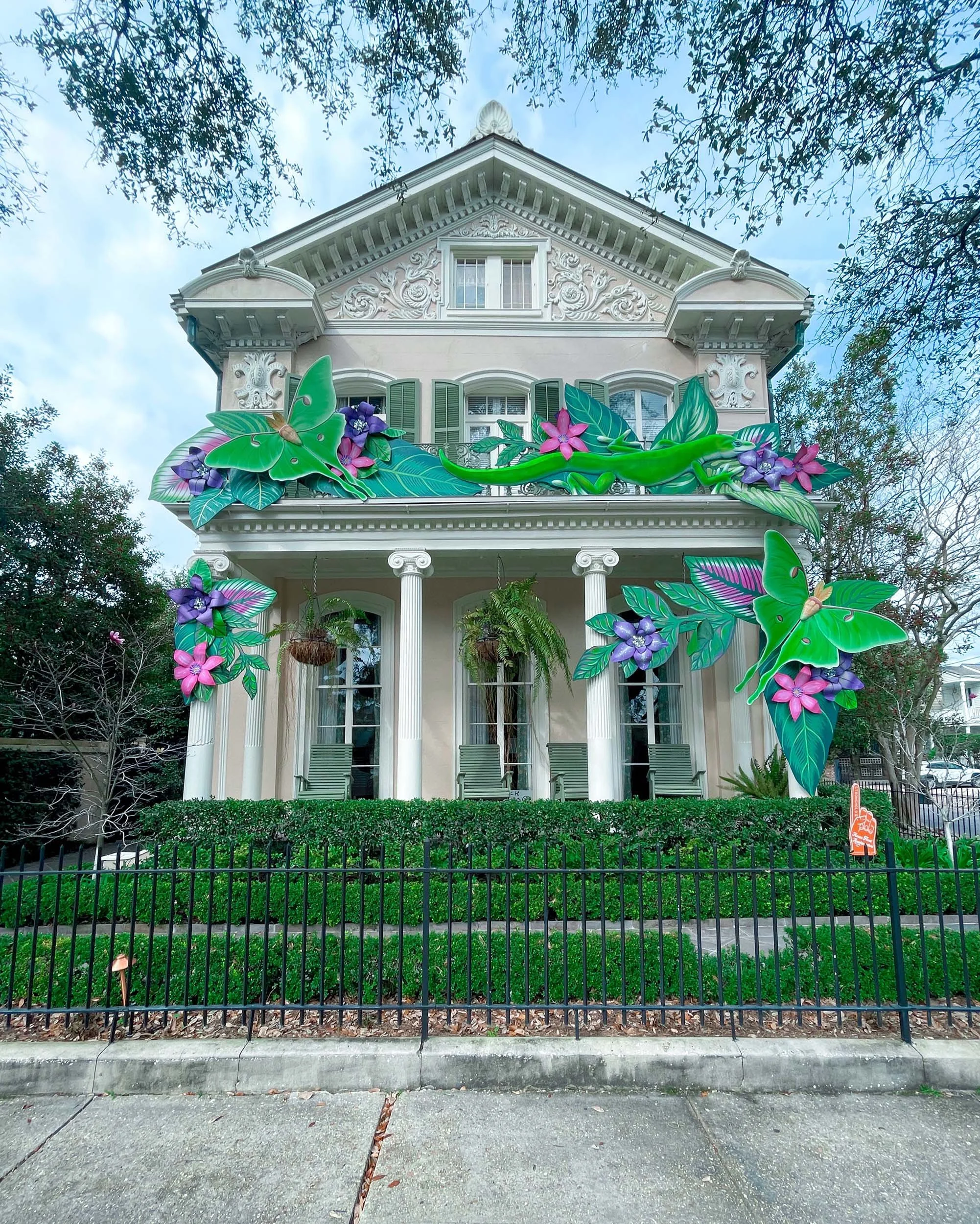The Mardi Gras House Floats Parade On
Early photo of Mardi Gras parade in the 1890s
It’s hard to imagine New Orleans without Mardi Gras – the city was established on this land in 1718, and just a decade or so later, the festivities were celebrated widely (though somewhat differently than today) across the area. Since then, for many, New Orleans and Mardi Gras have been synonymous with one another – parades, balls, family and friends coming together, good food and drink, and an electric vibe running through the city. Though the observance has evolved over the centuries, the festive air and the celebratory spirit have remained.
It was clear in late 2020 and early 2021 that massive crowds celebrating in the streets together would be problematic, the people of New Orleans did what they do best: they rallied and found other ways to celebrate one of the most significant seasons in our beloved city. And thus, the idea of “house floats” was born.
A house float along Bayou St. John, 2023
During the Carnival season, which runs from January 6th to the day before Ash Wednesday, revelers take to the streets with large parades full of floats – hugely decorated tractor-pulled trailers carrying people who throw out trinkets to onlookers lining the route. In the early days of New Orleans’ Mardi Gras celebrations, these were actually horse-drawn carriages and wagons that were elaborately decorated to parade through the streets, but now these can be several trailers long and covered in fiber optics, as well as traditional decorations. These floats draw massive crowds. When these kinds of celebrations weren’t an option for the sake of public health, people decided to transform their own homes to look like traditional Mardi Gras floats. A casual comment on social media quickly took off late in 2020, and in the months to follow, thousands of people got behind the idea to create a new tradition.
House float on historic St. Charles Avenue, visible on our city tour during Carnival of 2023
In some areas of the city, neighborhoods came together to choose themes and decorate accordingly. In other areas, individuals worked alone to put up elaborate displays. And others hired out-of-work Mardi Gras float artists to create beautiful tableaus for their homes. In the midst of a dark time for New Orleans and the world at large, it was an incredible way for people to come together safely and create something wonderful.
Both in 2021 and 2022, maps were created of the different house floats so that people could tour the city and take in the artwork, almost creating a reverse effect where the floats remained still while the revelers paraded past. Some house float hosts even created signature throws to mimic our usual parade experience – many gave out beads, snacks, the coveted Moon Pies that are so often thrown from floats during Carnival, and even handmade pieces of art that people could collect.
Fairy and gnome themed house float in Bayou St. John neighborhood
The house float idea even spread past the Greater New Orleans area to other parts of Louisiana, all along the Gulf Coast, and then to parts of the country and world where New Orleanian ex-pats were feeling the pangs of missing Mardi Gras.
While things have evolved over the past two years and parades have once again become part of the regular Mardi Gras season, the idea of the house float carries on. It has become a new outlet for us to express our joy and love of Carnival and the city in general. Even along the famed St. Charles Avenue, home to incredible mansions and part of the traditional uptown parade route, you can find beautiful, elaborately decorated houses that evoke all of what is good about Mardi Gras. On our city tour, you’ll not only learn about the history of New Orleans and see the beautiful architecture, you can also spot some of these house floats - homes decked out by incredible artists with intricate fiberglass and papier-mâché displays.
Music-themed house float in Lower Garden District, 2023
There have been very few times when New Orleans has had to cancel Mardi Gras festivities for the well-being of its citizens, but if we have learned anything from those times and especially in the past few years, it’s that we are a city with an indomitable spirit and a will to create and share our art with the world. Even in times of hardship when the parades couldn’t roll, Mardi Gras was and is still alive and well and remains one of the great treasures of the U.S. Come see the beauty for yourself!





